Because diacritics are not part of the traditional definition of font size, you can't ever have line height = font size. Even ASCII includes some diacritics (for example U0060). Diacritics can be applied to capitalized letters too, you don't even need obscure unicode extensions, latin1 is sufficient (U00C0 for example).
When a font is correctly designed and includes the box drawing block this can be easily checked – box drawing lines are supposed to be jointive so U2502 for example will give you the actual exact maximum height used by the font. Its height will be more than A or one of the other latin caps usually used to define font size. (unfortunately because horizontal lines are also supposed to be jointive the box drawing block can only be found in monospace fonts).
After allocating font height the text stack still has to reserve some place where to put diacritics (there are metadata in font formats that define how much a particular font will consume in addition to font size for diacritics). Usually this place overlaps with line spacing. When there is a single line, it shows up as line height > font size
Computing the exact minimal line height for a font size requires deep knowledge of the font used (via a specific lib, something like opentype.js) and the characteristics of the text engine used to render each element. Depending on the advancement of this text engine it will use more (or less) of the tricks permitted by the opentype spec to minimize space wastage in complex international situations.
For example unless a text stack implements handling of the opentype base table opentype spec the actual added spacing can grow to huge values (more than the 15/20% typical of western latin and given in other answers) as soon as one uses a font with support for Vietnamese, or other scripts that like to stack many diacritics on top of one other (even if your browser manages to render this page with a generic font it will probably compress diacritics vertically compared to when a vietnamese font is installed)
Likewise the text stack knows whether the text you put on a page includes or not complex diacritics. But for an input element it has no such information, that depends on what the user will type. So it needs to be conservative and reserve the worst-case line height for the scripts supported by the font you chose.
Broken web site designs where vertical input height has been under-allocated are very common, because web site/js lib/browser authors live in a 96dpi no-diacritics latin world, and think minimizing vertical height is beautiful. That breaks as soon as the site is viewed in another language, with slightly more complex unicode glyphs, slightly different fonts, or slightly different text zoom levels (due to hidpi or just user near-sightness). Normal text is usually fine since the designer didn't try to force it inside an undersized fixed-pixel box.
It is also common for input field sizing to be broken, when it uses monospace fonts for one reason or another, and the web designer assumed some ratio between sans serif and monospace and tried to "fix" it (usually by enlarging monospace since some browsers ship with a small default monospace for obscure legacy reasons, even though it is not a general rule).



